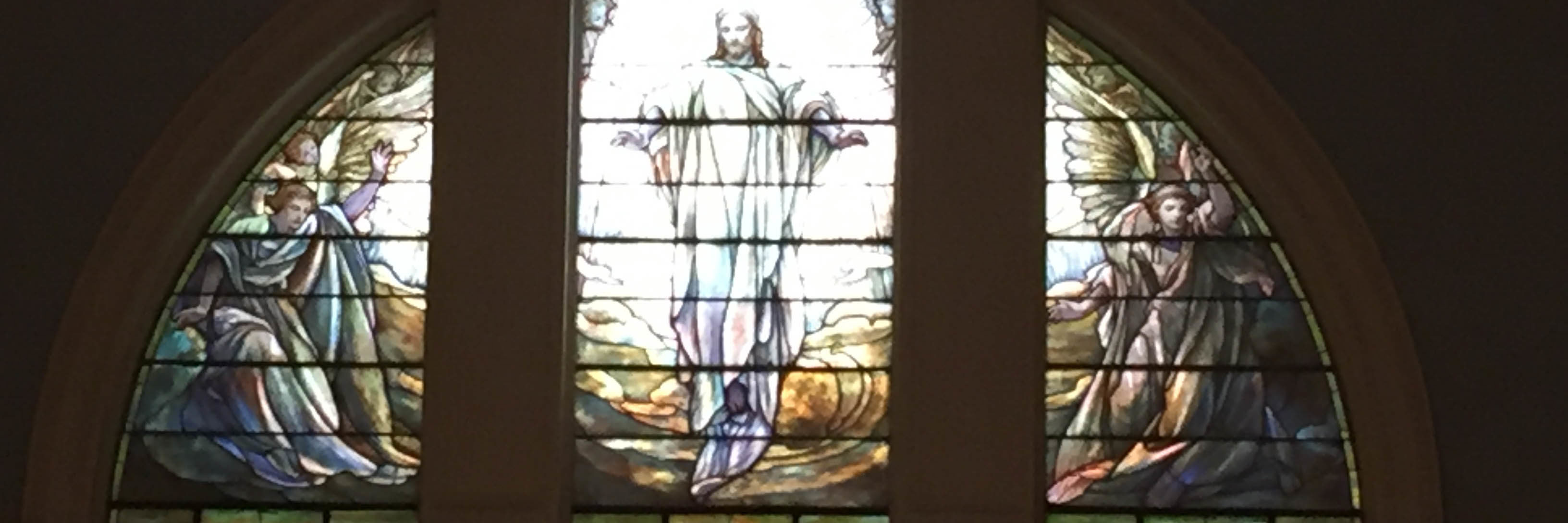Racial Justice
Why we have a “Black Lives Matter” banner on the front lawn
This article explains why we, the people of the First United Methodist Church of Melrose, Massachusetts, have erected a “Black Lives Matter” banner on our front lawn: Black Lives Matter Sign Explanation (003)
Why FUMC Stands and Acts for Racial Justice
“Do you accept the freedom and power God gives you to resist evil, injustice, and oppression in whatever forms they present themselves?” Most of us have said “I do” to this statement many times. It is the vow of baptism, which all members of the UMC affirm each time we baptize a new member.
What does this mean, to “resist evil, injustice and oppression”? It means many things, and will mean different things to different people. And it will mean different things in different social contexts and times. One thing, however, is clear and enduring in this statement —it indicates our agreement to engage in more than charity, more than offering simple kindnesses to those who suffer. It is a pledge to understand and take intentional actions to prevent evil, injustice and oppression—to stand up, speak out, invest resources and if necessary take risks to ensure that no one is victimized or marginalized by others.
In our current social context it has become increasingly clear that we are not in a post-racist time. Having had a Black President of the United States does not change the fact that Black people are subjected to a wide array of interpersonal, implicit and systemic racism. This is overwhelmingly evident: disparities in wealth between Whites and Blacks has increased since the early 60’s, (due in large part to historic and continuing discrimination in real estate which is the basis for most lower and middle class people’s wealth); disparities in the ways laws are created and enforced for inner city crime versus suburban and white collar crime resulting in huge disproportions in the prison population along racial lines, (note the response to the abuse of opioids now that it is a suburban problem) ; and racial gaps in education, employment, healthcare, the recording and telling of our history, access to cultural opportunities, etc.
Michelle Alexander, (the author of “The New Jim Crow”) has referred to slavery and the slaughter of Native Peoples as America’s “original sin.” As with our Christian understanding of “original sin,” this does not refer simply to isolated bad actions or mistakes, but rather to a persistent pattern that is deeply embedded in our psyches and manifest in both conscious and unconscious actions. The pattern of racism is the insidious and often unconscious relegation of a people to subordinate status based on the color of their skin and heritage.
Perhaps a sign of hope and of the movement of God’s Spirit, as violent and tragic as it may be, is that in our time the reality of racism is once again becoming increasingly clear and obvious. The flagrant and unapologetic use of racist labels and rhetoric by notable politicians who enjoy wide support, and the widespread video documentation of the violence toward Black boys and men, are indicative that the time to stand up and take action to resist this evil is now.
By placing a banner on the front lawn of the church stating our commitment to actively address the historically entrenched racism in our society, we will make clear where we stand and invite others who pass by to consider joining us.
Q: Why are we so focused on Black people? Why not “All Lives Matter”? A: Why not give free food to all people and not just the hungry? Some are disadvantaged and some are not. There is a preponderance of evidence that Black people have for over 400 years been treated as of lesser value than White people. This needs to be corrected. That God loves White people as much as everyone else is not questioned or disputed.
Q: Why Melrose? A: Melrose is ~92% White and 2.4% Black. This is not an accident, but the result of historic discrimination as well long standing economic patterns that have limited access to financial resources by Black people, thus precluding entry into the housing.
Learn More
Learn More: Follow this LINK to a resource page to learn more about racial justice issues.
Learn More: Follow this LINK to a resource page to learn more about opportunities to get involved.
Brief video links:
Franchesca Ramsey: 4 Black Lives Matter Myths Debunked | Decoded | MTV News
Jay Smooth: How to Tell Someone They SOUND Racist
Sermon
Sarah R’s sermon on why support racial justice from the Wesleyan tradition on DATE. Read full text.
Statements
Statement about Black Lives Matter by the Leaders of Thirteen Methodist Seminaries
Calvary United Methodist Church in Arlington, MA statement: Why they have a Black Lives Mater banner.
The General Secretary of the UMC Board of Church and Society apologizes for the use of the phrase “all lives matter” -which while obviously true, has been hijacked by those who are unwilling to address the deep inequities being called out by the Black Lives Matter movement.
Methodist Federation for Social Action (MFSA) of North Carolina takes stand in support of BLM.
Black Lives Matter—what it is and why many in the congregation support this movement and have signs on their lawns and on their homes. Here is the BLM platform which clearly states what their goals are. Supporting BLM is not anti-police.
Campaigns that address racism
Lynn United For Change-Housing Rights
Climate Justice
Workers Rights
